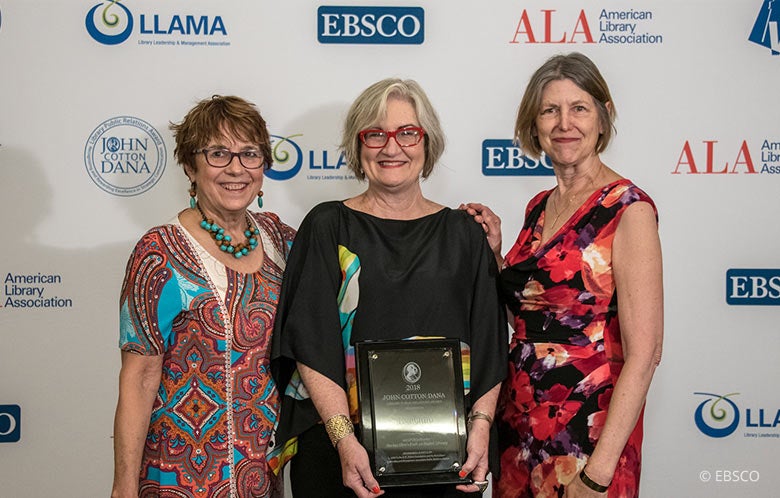Briefly describe your John Cotton Dana winning campaign. What was the goal?
Our #INFOhioWorks was a grass-roots effort to reinstate funding for the INFOhio project, which provides every Ohio student and teacher with a PreK-12 digital library, along with school library automation. INFOhio is funded through the state budget. In 2015 INFOhio had a 42% budget cut, so we immediately began investigating and planning ways to help educate Ohio legislators to reinstate funding for the next budget cycle in 2017.
Our goal for the campaign was to restore INFOhio’s state funding from $1.4M to $2.5M. We also wanted to remind all Ohio educators that INFOhio provides free access to digital educational content for all schools and to spread awareness of what the cost of the digital content for their school and district would look like if INFOhio funding was lost. Lastly, we wanted to motivate educators to take action and communicate to legislators’ their stories about how #INFOhioWorks for student learning.
How did you approach challenges?
We approached challenges in many ways to create a stronger campaign:
- Surveyed all administrators, technology directors and school librarians. Analyzed the survey which established that 96% of the schools could not afford, on their own, the digital content for students that INFOhio provides.
- Met with public policy thought leaders who provided strategic direction.
- Established a grass roots campaign.
- Attended the National Library Legislative Day sponsored by the American Library Association in Washington and learned from experts on how best to approach legislators.
- Identified key state legislators who agreed to be champions for INFOhio.
- Arranged appointments with key state legislators, listened to their advice, and testified to select committees in the House and Senate.
How has implementing public relations at your library improved its community involvement?
Across Ohio, teachers and administrators as well as librarians know about and talk about INFOhio. As a result of the campaign, we were able to identify areas throughout the state that are less aware of INFOhio. This helped us plan ways to address the low-use areas and provide strategic communications with those communities. We were also able to get administrators and legislators involved by joining with teachers and librarians to help decision makers understand the community need for INFOhio.
Each John Cotton Dana winner has found a way to overcome an obstacle by engaging their community. And, in so doing, the community wins.
What are some tips that you would give to other librarians that would like to learn more about marketing their library?
A few tips for marketing:
- Use minimal text — let the pictures and graphics tell the (short) story.
- Focus on solutions and benefits — what problem are you trying to solve for your patrons?
- Elicit an emotional response from your reader — relief that the solution to their problem is freely available at their library, joy that their search for the solution is over, excitement to investigate what other solutions or benefits their library offers, etc.
- Follow the data — what reaction are you getting from your patrons in terms of circulation and use of materials/electronic resources?
What piece of advice would you give libraries that were considering applying for the John Cotton Dana awards?
I would say know when you have overcome a problem with success. Tell the story so that others can learn. Each John Cotton Dana winner has found a way to overcome an obstacle by engaging their community. And, in so doing, the community wins.
What did you learn from this experience?
By the end of the campaign, not only was INFOhio successful in achieving all our goals, but we learned a lot along the way:
- Communication must be clear, concise, and continual. When it comes to advocacy, we learned that we must communicate with our state legislators year-round, not just at the budget cycle.
- Communication must be impactful to decision-makers. It was crucial that our audience, legislators, heard from the audience that mean the most to them — and it wasn't us. It was the tax-paying citizens of the state, the legislator's constituents.
- Communication must tell a story. The campaign wasn't just about the facts — it was about the students, teachers, and parents that rely on our digital resources every day.
